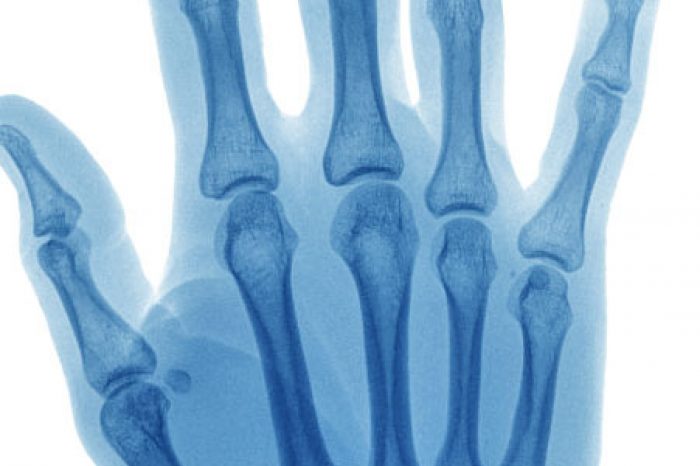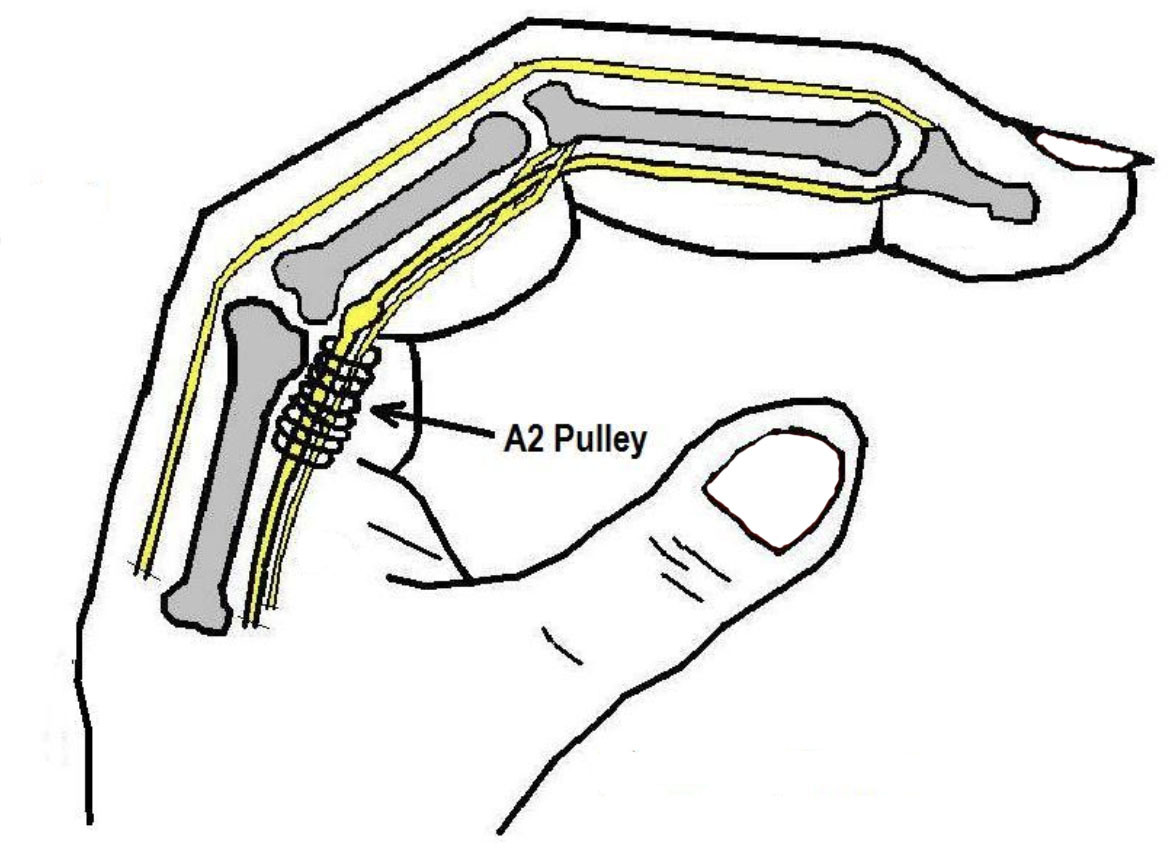What Happens in Trigger Finger?
In trigger finger, the tendon sheath becomes inflamed, leading to swelling and narrowing of the passage. As a result, the tendon struggles to glide smoothly through the sheath. Over time, the inflammation may cause the formation of nodules or thickening of the tendon itself. When this occurs, the affected finger may lock in a bent position and require force to straighten, often accompanied by a painful snapping sensation.
- Thickening of the A1 Pulley: The A1 pulley often becomes thickened and stiff, which increases the resistance against the flexor tendons as they glide through it. This thickening can be quantitatively assessed using sonoelastography, which has shown increased stiffness and thickness in patients with trigger finger compared to healthy controls [Miyamoto et al, 2011].
- Tendon Enlargement: The flexor tendons, particularly at the flexor digitorum superficialis (FDS) bifurcation, can become enlarged. This enlargement is more pronounced in trigger fingers and contributes to the difficulty in tendon gliding through the A1 pulley. High-resolution ultrasound studies have demonstrated that the combined tendon mass is significantly largerin trigger fingers, especially at the FDS bifurcation [Chuang et al, 2017].
- Histopathological Changes: Histological studies have revealed that the tenosynovium, the sheath surrounding the tendons, often shows signs of hypertrophy and increased production of hyaluronic acid. This results in an edematous extracellular matrix, which further increases the pressure within the pulley system and contributes to the stenosis [Uchihashi et al, 2014].
- Biomechanical Factors: Biomechanical studies have shown that the force required by the extensor tendons to overcome the catching flexors is significantly higher in trigger fingers. This increased force is necessary to overcome the resistance posed by the thickened pulley and enlarged tendons [Lu et al, 2013].
- Adhesions: Dynamic sonographic studies have indicated that adhesions between the flexor tendons and surrounding tissues are common in trigger fingers. These adhesions can restrict the differential motion of the tendons, contributing to the locking phenomenon [Ling Chuang et al, 2021].
What are the Causes and Risk Factors
of Trigger Finger? Several factors can contribute to the development of trigger finger, including:
- Repetitive Hand Use: Frequent gripping or grasping motions can strain the tendons.
- Medical Conditions: Conditions such as diabetes, rheumatoid arthritis, and gout increase the risk of developing trigger finger [Guggenheim et al, 2024; Shen et al, 2019].
- Age and Gender: Trigger finger is more common in women and individuals over 40 [Guggenheim et al, 2024; Shen et al, 2019].
- Occupational Factors: Jobs requiring prolonged use of the hands, such as musicians, farmers, and assembly-line workers, are at higher risk [Shen et al, 2019; Atthakomol et al, 2023].
What are the Symptoms of Trigger Finger?
The primary symptom of trigger finger is the locking or catching sensation when trying to extend the affected finger. Other symptoms may include:
- Stiffness, particularly in the morning
- Tenderness or pain at the base of the finger
- A clicking or popping sensation during movement
- A visible bump or nodule at the base of the affected finger
Conclusion
Trigger finger is a treatable condition, but understanding its underlying causes can help in prevention and management. By recognizing early symptoms and making lifestyle adjustments, individuals can minimize discomfort and maintain hand function. If symptoms persist, consulting a healthcare professional can provide the best course of action for long-term relief.
References:
- Atthakomol P, Manosroi W, Sathiraleela K, Thaiprasit N, Duangsan T, Tapaman A, Sripheng J. Prognostic factors related to recurrence of trigger finger after open surgical release in adults. J Plast Reconstr Aesthet Surg. 2023 Aug;83:352-357.
- Chuang XL, Ooi CC, Chin ST, Png MA, Wong SK, Tay SC, McGrouther DA. What triggers in trigger finger? The flexor tendons at the flexor digitorum superficialis bifurcation. J Plast Reconstr Aesthet Surg. 2017 Oct;70(10):1411-1419.
- Guggenheim L, Kang Y, Furniss D, Wiberg A. Identifying non-genetic factors associated with trigger finger. J Plast Reconstr Aesthet Surg. 2024 Jul;94:91-97.
- Ling Chuang X, McGrouther DA. Adhesions as a component of the trigger finger: a dynamic sonographic study. J Hand Surg Eur Vol. 2021 Oct;46(8):852-856.
- Lu SC, Kuo LC, Jou IM, Wu CC, Tung WL, Sun YN, Su FC. Quantifying catch-and-release: the extensor tendon force needed to overcome the catching flexors in trigger fingers. J Orthop Res. 2013 Jul;31(7):1130-5.
- Miyamoto H, Miura T, Isayama H, Masuzaki R, Koike K, Ohe T. Stiffness of the first annular pulley in normal and trigger fingers. J Hand Surg Am. 2011 Sep;36(9):1486-91.
- Shen PC, Chang PC, Jou IM, Chen CH, Lee FH, Hsieh JL. Hand tendinopathy risk factors in Taiwan: A population-based cohort study. Medicine (Baltimore). 2019 Jan;98(1):e13795.
- Uchihashi K, Tsuruta T, Mine H, Aoki S, Nishijima-Matsunobu A, Yamamoto M, Kuraoka A, Toda S. Histopathology of tenosynovium in trigger fingers. Pathol Int. 2014 Jun;64(6):276-82.

